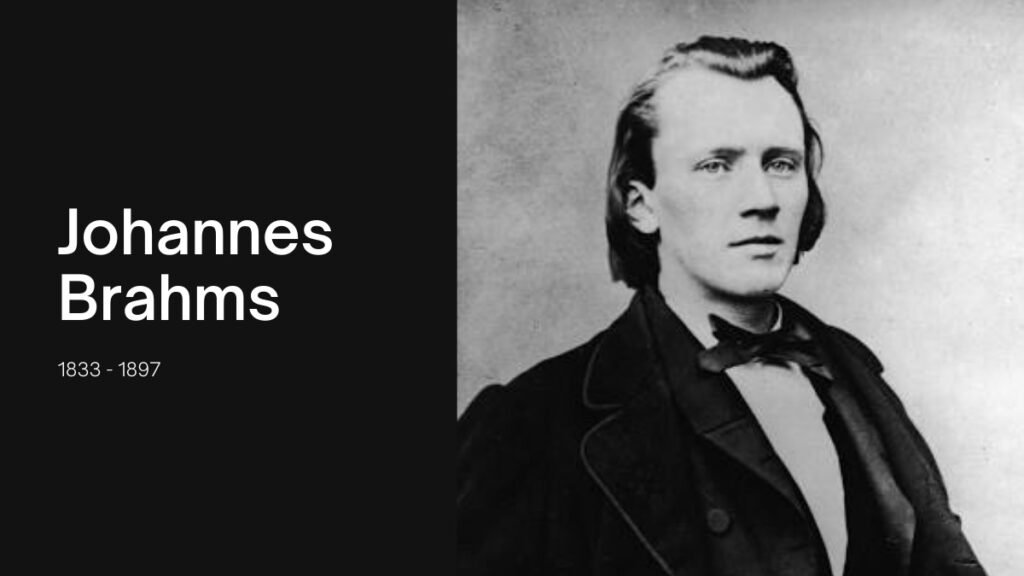Johannes Brahms, one of the most influential composers of the Romantic era, left an indelible mark on the world of classical music. Born in Hamburg, Germany, in 1833, Brahms’s compositions are revered for their emotional depth, technical mastery, and profound musicality. In this article, we delve into the life, works, and legacy of Johannes Brahms, exploring his contributions to music and his enduring impact on generations of composers and listeners alike.
Early Life and Education
Born into a humble family, Brahms showed an early aptitude for music. His talent was recognized by his parents, who provided him with piano lessons and encouraged his musical pursuits. Brahms’s early exposure to the works of classical masters, such as Bach, Mozart, and Beethoven, deeply influenced his musical development.
At the age of seven, Brahms began studying piano under the tutelage of Otto Friedrich Willibald Cossel. His extraordinary talent soon caught the attention of prominent musicians in Hamburg, including Eduard Marxsen, who became his mentor. Under Marxsen’s guidance, Brahms received a comprehensive musical education, studying composition, theory, and performance.
Rise to Prominence
In his early twenties, Brahms embarked on a career as a concert pianist and composer. His remarkable abilities as a performer garnered him widespread acclaim, and he quickly gained recognition as a leading figure in the musical world. Brahms’s compositions, characterized by their richness of melody, harmonic complexity, and structural integrity, captivated audiences and critics alike.
Brahms’s breakthrough came with the publication of his Piano Concerto No. 1 in D minor, Op. 15, in 1859. The concerto, which showcased his virtuosic piano technique and inventive orchestration, established him as a composer of considerable talent and ambition.
Musical Style and Innovations
Brahms’s music is often described as a synthesis of classical forms and Romantic expressiveness. He drew inspiration from the works of past masters while infusing his compositions with a distinctive voice and emotional depth. Brahms’s meticulous craftsmanship and attention to detail are evident in his symphonies, chamber music, and choral works.
One of Brahms’s notable contributions to music was his development of thematic transformation, a technique in which musical motifs undergo various transformations throughout a composition. This approach, exemplified in works such as his Symphony No. 4 in E minor, Op. 98, imbues his music with unity and coherence, creating a sense of organic growth and development.
Legacy and Influence
Johannes Brahms’s legacy extends far beyond his own lifetime. His compositions continue to be performed and studied by musicians and music lovers worldwide, testament to their enduring appeal and significance. Brahms’s influence can be heard in the works of subsequent composers, including Gustav Mahler, Antonín Dvořák, and Sergei Rachmaninoff, who admired his mastery of form and depth of expression.
Beyond his musical achievements, Brahms’s dedication to his craft and uncompromising artistic integrity serve as inspiration to aspiring musicians and composers. His commitment to excellence and his relentless pursuit of perfection set a standard for artistic excellence that continues to resonate to this day.
Conclusion
In conclusion, Johannes Brahms stands as one of the preeminent composers of the Romantic era, whose music continues to captivate and inspire audiences around the world. Through his innovative compositions, rich harmonic language, and profound emotional expression, Brahms left an indelible mark on the world of classical music. His legacy endures as a testament to the enduring power of music to transcend time and speak to the human soul. As we celebrate Brahms’s contributions to the world of music, we are reminded of the timeless beauty and significance of his artistry.
Frequently Asked Questions about Johannes Brahms
1. Who was Johannes Brahms?
Johannes Brahms was a renowned German composer and pianist who lived during the Romantic era. Born in Hamburg in 1833, Brahms is celebrated for his profound contributions to classical music.
2. What are some of Brahms’s most famous compositions?
Brahms composed a wide range of works across various genres, including symphonies, concertos, chamber music, piano pieces, and choral compositions. Some of his most famous works include his Symphony No. 4 in E minor, Piano Concerto No. 1 in D minor, Violin Concerto in D major, and the German Requiem.
3. What was Brahms’s musical style?
Brahms’s musical style is often characterized by its combination of classical forms and Romantic expressiveness. His compositions are known for their rich melodies, complex harmonies, and structural integrity. Brahms also developed the technique of thematic transformation, which involves the development and variation of musical motifs throughout a composition.
